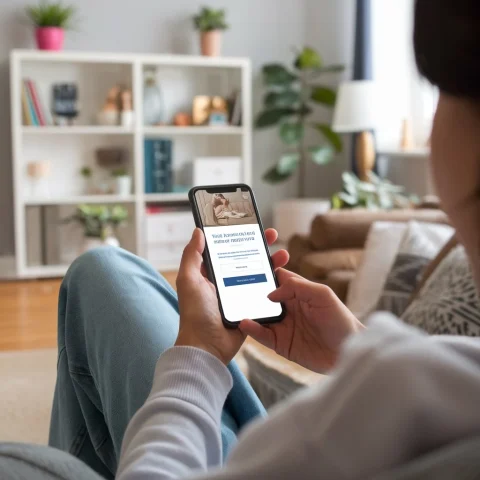How to Create Compelling Landing Pages?
In the world of digital marketing, landing pages play a crucial role in converting visitors into customers. A well-designed landing page can significantly enhance your conversion rates, making it essential to invest time and effort into creating compelling content and design. In this blog, we will explore effective tips for crafting landing pages that not only attract visitors but also encourage them to take action.

What is a Landing Page?
A landing page is a standalone web page specifically designed for a marketing or advertising campaign. Unlike regular web pages, which may serve multiple purposes, landing pages have a single focus: to convert visitors by prompting them to take a specific action, such as signing up for a newsletter, downloading an eBook, or making a purchase.
Key Elements of a High-Converting Landing Page
- Clear and Compelling Headline
- Engaging Sub headline
- High-Quality Visuals
- Compelling Call-to-Action (CTA)
- Focus on Benefits Over Features
- Social Proof and Testimonials
- Simple and Clean Design
- Mobile Optimization
- Fast Loading Speed
- A/B Testing
1. Clear and Compelling Headline
Your headline is the first thing visitors will see, so it needs to grab their attention immediately. A compelling headline should be clear, concise, and relevant to the offer you are promoting. Use strong action words and highlight the benefits of your offer. For example, instead of saying “Sign Up,” try “Join Thousands of Happy Customers Today!”

2. Engaging Sub headline
Following your headline, an engaging subheadline can provide additional context and reinforce your message. This is an opportunity to elaborate on the value proposition and explain what makes your offer unique. Keep it brief but impactful—aim for clarity that complements the main headline.
3. High-Quality Visuals
Visual elements are crucial for capturing attention and conveying your message effectively. Use high-quality images or videos that are relevant to your offer. For instance, if you’re promoting a product, include clear images from multiple angles or a short video demonstrating its use. Visuals should enhance the overall appeal of the landing page without overwhelming the visitor.
4. Compelling Call-to-Action (CTA)
Your call-to-action is arguably the most critical element of your landing page. It should be clear, persuasive, and visually distinct from other elements on the page. Use action-oriented language like “Get Started,” “Download Now,” or “Claim Your Free Trial.” Additionally, consider placing multiple CTAs throughout the page to capture interest at various points in the visitor’s journey.
5. Focus on Benefits Over Features
While it’s important to mention features of your product or service, focusing on benefits can be more persuasive. Explain how your offer solves a problem or improves the visitor’s life. For example, instead of listing features of software, describe how it can save time or increase productivity.
6. Social Proof and Testimonials
Including social proof can significantly boost credibility and trustworthiness. Display testimonials from satisfied customers, case studies, or user reviews that highlight positive experiences with your product or service. You can also showcase logos of well-known clients or media mentions to further establish authority.
7. Simple and Clean Design
A cluttered landing page can overwhelm visitors and lead to higher bounce rates. Opt for a clean design with plenty of white space that guides users’ eyes toward the most important elements—your headline, visuals, and CTA. Use contrasting colors for buttons to make them stand out while ensuring that the overall design aligns with your brand identity.
8. Mobile Optimization
With an increasing number of users accessing websites via mobile devices, ensuring that your landing page is mobile-friendly is crucial for maximizing conversions. Test your landing page on various devices and screen sizes to ensure it looks great and functions smoothly across all platforms.

9. Fast Loading Speed
Page loading speed is a critical factor in user experience and conversion rates. A slow-loading landing page can frustrate visitors and lead them to abandon your site before they even see your offer. Optimize images and use efficient coding practices to improve loading times.
10. A/B Testing
To continually improve your landing pages, implement A/B testing (split testing) to compare different versions of your page against each other. Test variations in headlines, CTAs, images, and layout to determine what resonates best with your audience. Use analytics tools to track performance metrics such as conversion rates and bounce rates.
Conclusion
Creating compelling landing pages is essential for driving higher conversions in any digital marketing campaign. By focusing on key elements such as clear headlines, engaging visuals, persuasive CTAs, and social proof, you can design landing pages that effectively capture attention and encourage action.
Remember that optimization is an ongoing process—regularly analyze performance data and conduct A/B tests to refine your approach continually. With dedication and strategic planning, you can create landing pages that not only attract visitors but also convert them into loyal customers.
Start implementing these tips today and watch as your conversion rates soar! Your efforts in creating effective landing pages will pay off in increased engagement and sales for your business.
